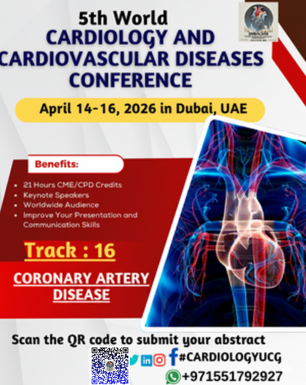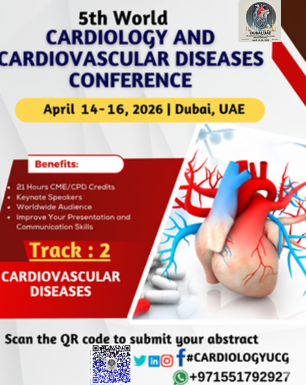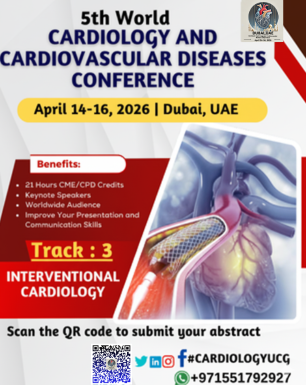Sub track coronary-artery-disease :
Atherosclerosis, Risk Factors for Coronary Artery Disease, Myocardial Infarction (Heart Attack), Angina Pectoris, Stable Angina, Unstable Angina, Prinzmetal's Angina, Silent Ischemia, Coronary Artery Spasm, Coronary Artery Bypass Grafting (CABG), Percutaneous Coronary Intervention (PCI), Stent Placement, Balloon Angioplasty,
What is coronary-artery-disease ?
Coronary artery disease (CAD), also known as coronary heart disease (CHD),
is a condition in which the blood vessels (coronary arteries) that supply
oxygen and nutrients to the heart muscle become narrowed or blocked. This
reduction in blood flow can lead to various heart problems, including chest
pain (angina), heart attack (myocardial infarction), and heart failure.
Causes of Coronary Artery Disease:
The primary cause of CAD is atherosclerosis,
a condition in which fatty deposits (plaques) build up inside the coronary
arteries. These plaques are made up of cholesterol, fat, calcium, and other
substances found in the blood. Over time, these deposits can harden and narrow
the arteries, making it more difficult for blood to flow to the heart.
Key Processes Involved:
1.
Plaque
Formation (Atherosclerosis):
- High
levels of cholesterol, particularly low-density lipoprotein (LDL), combined with other
risk factors like smoking, high blood pressure, and diabetes, can lead to
the buildup of fatty deposits in the arterial walls. These plaques narrow
the arteries, limiting blood flow.
2.
Plaque
Rupture and Blood Clot Formation:
- If
a plaque ruptures, it can trigger the formation of a blood clot at the
site. This clot can completely block the flow of blood to a part of the
heart muscle, resulting in a heart
attack.
3.
Reduced
Oxygen Supply:
- When
the heart’s blood supply is reduced due to narrowed or blocked arteries,
the heart muscle may not receive enough oxygen, leading to ischemia (insufficient
oxygen) and causing chest pain (angina).
Risk Factors for Coronary Artery
Disease:
Several risk factors increase the likelihood
of developing CAD:
- High Blood Pressure (Hypertension):
Puts extra strain on the heart and blood vessels.
- High Cholesterol Levels:
High levels of LDL cholesterol and low levels of high-density lipoprotein (HDL)
cholesterol contribute to plaque buildup.
- Smoking: Damages the walls
of the arteries and accelerates plaque buildup.
- Diabetes: Increases the
risk of plaque buildup and causes damage to the blood vessels.
- Obesity: Linked to high
blood pressure, high cholesterol, and diabetes, all of which increase CAD
risk.
- Physical Inactivity:
Increases the risk of obesity, high blood pressure, and high cholesterol.
- Unhealthy Diet: Diets high
in saturated fats, trans fats, and cholesterol contribute to plaque
formation.
- Family History of Heart Disease:
A family history of CAD can increase your risk.
- Age: The risk of CAD
increases with age, particularly for men over 45 and women over 55.
- Stress: Chronic stress may
contribute to risk factors like high blood pressure and unhealthy coping
mechanisms (e.g., smoking, overeating).
- Excessive Alcohol Consumption:
Excessive drinking can raise blood pressure and contribute to heart
disease.
- Gender: Men are at higher
risk at an earlier age, but women’s risk increases and may surpass men’s
risk after menopause.
Symptoms of Coronary Artery Disease:
- Chest Pain (Angina): A
feeling of pressure, tightness, or pain in the chest, often triggered by
physical activity or stress. Angina can be:
- Stable Angina: Occurs
with exertion or stress and goes away with rest.
- Unstable Angina: Occurs
unpredictably, even at rest, and is a sign of a heart attack risk.
- Prinzmetal's Angina:
Caused by a temporary spasm in the coronary artery, often at rest.
- Shortness of Breath:
Occurs when the heart is unable to pump enough oxygenated blood to meet
the body’s needs.
- Fatigue: Persistent
tiredness can be a sign that the heart isn’t pumping efficiently.
- Dizziness or Fainting:
Reduced blood flow to the heart can cause fainting or lightheadedness.
- Heart Attack: Symptoms of
a heart attack include severe chest pain, shortness of breath, nausea, and
pain in the arms, back, or jaw.
Diagnosis of Coronary Artery Disease:
- Electrocardiogram (ECG):
Measures the electrical activity of the heart and can detect abnormalities
caused by CAD.
- Stress Testing: A
treadmill test or pharmacological stress test to observe how the heart
responds to physical exertion or medication.
- Echocardiography: Uses
sound waves to produce images of the heart, helping doctors assess its
function and detect damage.
- Coronary Angiography: An
invasive procedure that uses a dye and X-rays to visualize the coronary
arteries and identify blockages.
- CT Coronary Angiography: A
non-invasive imaging test that provides detailed images of the coronary
arteries.
Treatment of Coronary Artery Disease:
Treatment depends on the severity of the
disease and may involve a combination of lifestyle changes, medications, and
procedures.
1.
Lifestyle
Changes:
- Healthy Diet: Focus on
fruits, vegetables, whole grains, lean proteins, and healthy fats. Limit
processed foods, salt, and sugary beverages.
- Exercise: Regular
physical activity strengthens the heart and helps reduce risk factors.
- Quit Smoking: Smoking
cessation is crucial in reducing the risk of heart disease.
- Weight Management:
Maintaining a healthy weight helps control blood pressure, cholesterol,
and blood sugar.
2.
Medications:
- Statins: To lower
cholesterol levels.
- Beta-blockers: To reduce
heart rate and blood pressure.
- ACE inhibitors: To relax
blood vessels and lower blood pressure.
- Antiplatelet Drugs (e.g., Aspirin):
To prevent blood clot formation.
- Nitrates: To relieve
angina by dilating blood vessels.
- Calcium Channel Blockers:
To reduce blood pressure and relieve angina.
3.
Interventional
Procedures:
- Percutaneous Coronary Intervention (PCI):
A procedure to open narrowed or blocked coronary arteries using a balloon
and stent (a small mesh tube).
- Coronary Artery Bypass Grafting (CABG):
A surgical procedure to bypass blocked arteries by creating new routes
for blood to flow.
4.
Revascularization:
- A
procedure used to restore blood flow to the heart muscle by either
bypassing the blockage or clearing it using stents or angioplasty.
Prevention of Coronary Artery
Disease:
- Healthy Lifestyle: A
heart-healthy diet, regular physical activity, and maintaining a healthy
weight are key factors in preventing CAD.
- Manage Risk Factors:
Control blood pressure, cholesterol levels, blood sugar (if diabetic), and
reduce smoking and alcohol consumption.
- Regular Health Check-ups:
Early detection of risk factors like high cholesterol or blood pressure
can prevent the development of CAD.





